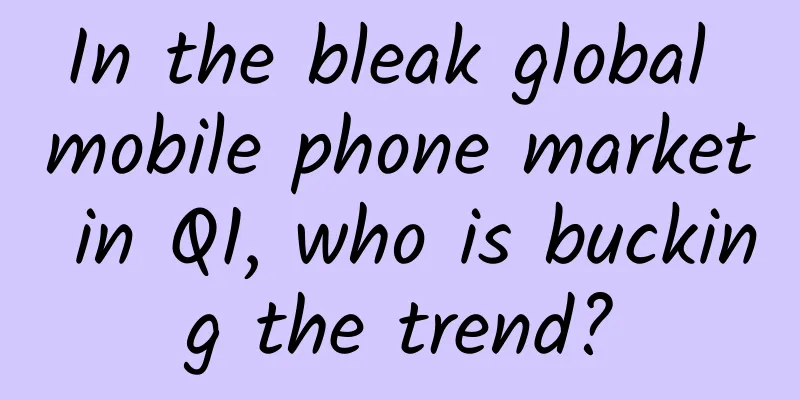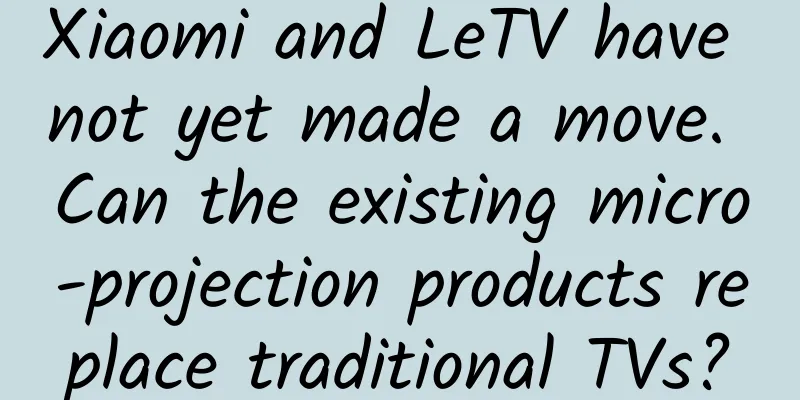In the bleak global mobile phone market in Q1, who is bucking the trend?

|
In addition to the Chinese market, in the smartphone markets in Europe, Africa and the Middle East, Chinese mobile phone brands including Huawei, Xiaomi, Transsion and others delivered another surprising performance in the first quarter of this year. And all this happened under the overall downturn in the global market.
On June 13, IDC released a set of latest research data showing that in the first quarter of 2019, the European smartphone market shipments were 53.5 million units, down 2.74% year-on-year. Samsung, Huawei, Apple, Xiaomi, and HMD ranked in the top five in terms of shipments, with Huawei's shipments increasing by 66.13% year-on-year and Xiaomi's shipments increasing by 33.26% year-on-year. As shown in the figure above, Samsung shipped 15.7 million smartphones in the European smartphone market in the first quarter, down 6.82% year-on-year. Samsung usually has about one-third of the market share, which fell slightly in the first quarter of this year (accounting for 29.47%). Although the Galaxy S10 and Galaxy S10+ performed well this quarter, Samsung is losing favor with consumers in the mid- and low-end markets, and it is likely that the Samsung Galaxy S10 5G will not be of much help in this regard. According to data, Huawei's mobile phone shipments in the first quarter reached 13.5 million units, with overall sales up 66.13%. After Huawei, Apple ranked third with sales of 7.8 million units, and the data fell by 22.73% year-on-year. Xiaomi ranked fourth with shipments of 2.9 million units, and sales also rose sharply year-on-year. Currently, Huawei's market share in Europe has soared to 25.39%. This is the closest Huawei has ever come to beating Samsung in the European market - compared with Apple, Huawei is now closer to Samsung's market share. In the European market, Huawei P30 and P30 Pro's eye-catching shipment figures for the entire first quarter are there, eclipsing Apple. "One clear trend is that Huawei is focusing on improving its position in mobile devices, with smartphones being its leading product," Ryan Reith, program vice president at IDC, said in a statement. "The overall smartphone market faces challenges in almost all areas, but Huawei has been able to achieve 50% overall growth, and by the end of 2019, the top rankings of Samsung, Huawei and Apple may be revealed." So, what did Huawei and Xiaomi do right in the market competition? European market: variables amid overall downturn In the first quarter of 2019, the European smartphone market shipped 53.5 million units. The top rankings were Samsung, Huawei, Apple, Xiaomi, and HMD. In addition, three of the five brands experienced negative growth, while Huawei and Xiaomi showed unexpected results. In fact, the rise of Chinese mobile phone brands is not limited to Europe, nor has it only been in the past one or two quarters. Although Samsung occupied the top spot in the global smartphone market for four quarters last year, Huawei's smartphone shipments exceeded Apple in the second quarter of 2018, breaking the dual status of Samsung and Apple in the smartphone market for the first time in seven years. Judging from the performance of the global market in the past two years, Chinese mobile phone brands such as Huawei, OPPO, and Xiaomi have shown remarkable growth, and their market share is constantly climbing. Since the multiple survey data released by IDC this time focused on the European, African and Middle Eastern markets, this also attracted the attention of Dongdong Notes. In the overall downturn of these markets, what did Huawei and Xiaomi do right? As a world-renowned Chinese mobile phone brand, Huawei has put Samsung under tremendous pressure in the global market, especially in several major European markets. When Samsung released the Galaxy S10+ in February this year, Huawei released the P30 series products shortly after. The P30 Pro's powerful photo and video functions, as well as its advantages in optical zoom and hybrid lossless zoom, left a deep impression on European consumers. In terms of pricing, the P30 Pro is priced at 999 euros, while the Samsung Galaxy S10+ starts at $999.99, which can be said to be comparable and even challenges the dominant position of the Galaxy S10+. Huawei's high-end devices continue to generate strong demand in the European market, including its flagship models sold through online channels. According to IDC data, Huawei's challenge to Samsung has indirectly weakened Apple's influence, and its market share in Europe is likely to reach its highest level in five years. From a brand perspective, Apple is considered to have just gone through its most difficult quarter, with its market share in Europe falling to 14.74% and shipments of 7.8 million units. According to data, Apple's shipments in the region fell by 22.73%, which is also the worst Q1 performance for Apple in five years according to IDC's related report. In addition to Apple phones, Nokia (HMD) is also the most affected brand. According to the IDC report, HMD Global shipped 2.2 million units in Europe in the first quarter of 2019, accounting for about 4.21% of the market share. Compared with the shipment of 3.3 million units in the first quarter of 2018, it has dropped by 33%. According to data from Counterpoint Research, HMD Global shipped 3 million to 3.4 million units worldwide in the first quarter of 2019, which means that the European market accounts for two-thirds of HMD's global sales. From this situation, HMD's main battlefield has been narrowed to Europe, and under the competition from Chinese mobile phone brands, even the current ranking in this market may not be maintained in the next year. In fact, mobile phone companies such as Samsung, Huawei, Apple and Xiaomi are all facing a European market where the overall market is declining. At the retail market level, the average selling price of smartphones is declining throughout Western Europe. Although the average selling price in Central and Eastern Europe has remained stable for many years, it is only slightly higher than the average market price in Western Europe. "The market has been moving in a relatively predictable way over the past few quarters," said Marta Pino, research manager for EMEA at IDC. "Overall market shipments have slowed as consumers upgrade their devices, with Apple being challenged by new models and devices, while Chinese vendors are making great strides every quarter." Some market analysts analyzed the counter-trend rise of brands such as Huawei and Xiaomi in the European market based on another set of data. IDC recently released another market research report: In the first quarter of 2019, global shipments of wearable devices reached 49.6 million units, a year-on-year increase of 55.2%. The top five wearable device companies in terms of shipments, market share and year-on-year growth in the first quarter of 2019 are Apple, followed by Xiaomi and Huawei, with market shares of 25.8%, 13.3% and 10%, respectively. Analysts believe that the reason why Xiaomi's wearable devices rank second is due to the popularity of Xiaomi's mobile phone products. In the first quarter, the global shipments of Xiaomi's wearable devices were about 5 million units. Huawei's shipment growth rate in the wearable device market in the first quarter was even more impressive, exceeding 282.2%. IDC said that Huawei's success in this market is directly related to its success in the smartphone field, because the two types of products are often bundled together for marketing and sales. "Looking ahead, smart earbuds will become an increasingly important product category as major platform and device makers use this device as a springboard to draw consumers into an ecosystem of wearables that complement their smartphones or can leave the phone behind when necessary," Jitesh Ubrani, research manager for IDC Mobile Device Trackers, said in a statement. African market moves forward amid ups and downs According to another IDC report: In the first quarter of 2019, shipments of smartphones in Africa fell 7.1% year-on-year to 21.5 million units. IDC's recently released global mobile phone tracking report for the first quarter of 2019 shows that due to seasonal factors, the two largest mobile phone markets in Africa - Nigeria and South Africa - performed poorly, with a month-on-month decline of 14.7% and 23.4% respectively compared with the fourth quarter of last year. “While Africa’s smartphone market experienced a sequential decline, year-over-year shipments actually grew by 5.6 percent,” said Arnold Bonella, research analyst at IDC. "The year-on-year growth indicates that the market is showing signs of improvement, while the month-on-month decline can be attributed to the fact that the African market has always had weak performance in the first quarter and there was significant seasonal growth in the fourth quarter of last year. In addition, the performance of some major (regional) markets in Africa has indeed been disappointing over the past period of time," Bonella concluded. So, what is the development status of Chinese mobile phone brands such as Huawei and Xiaomi in the African market? As we all know, Transsion Holdings, a mobile phone manufacturer from Shenzhen, China, has always been No. 1 in the African market. Even if the overall market growth in the African continent slows down, Transsion's leading advantage is still obvious. According to IDC's report, the current African smartphone market continues to be dominated by mid-range, low-end and cost-effective models. Transsion Holdings (its brands Tecno and Itel) occupies the top spot in the market, with total smartphone shipments accounting for 33.1% of the market share in the first quarter of 2019. In addition, Samsung ranked second with a market share of 24.5%, and Huawei unexpectedly rose to third with a market share of 11.8%. According to IDC's market report, compared with the same period last year, Nigeria's smartphone shipments fell 11.9% in the first quarter to only 2.3 million units; South Africa's overall mobile phone shipments fell 4% to 4.7 million units. The economic downturn has greatly affected the smartphone market in both countries. Nigeria's decline in the first quarter of this year was particularly severe, partly due to the country's short-term ban on Chinese mobile phone brands, and market uncertainty has exacerbated the sluggish atmosphere in the mobile phone market. Data showed that as of March 31, Nigeria's gross domestic product (GDP) grew by only 2%, far below the original target; South Africa's GDP shrank by 3.2% month-on-month in the first quarter of this year, and the challenges in the mobile phone industry were mainly due to excess inventory after strong growth in the fourth quarter. As a result, IDC research analyst Arnold Ponela noted that the African market is expected to continue to be dominated by "low-end to mid-range devices" as "cost-effective products with lower prices and better functions will increasingly dominate the market." Perhaps, such analysis results are not only good for Transsion Holdings, but also for many mobile phone brands from China, which can continue to play to their strengths and take advantage of their high cost-performance ratio. With the market operation in recent years, brands including Huawei and Xiaomi have gone from being almost ignored to being recognized by local consumers. In 2018, they gradually approached Samsung, which has always been the market runner-up, and became dazzling smartphone brands on the African continent. Local consumers' preference for low-priced smartphones indicates that Chinese smartphone brands will continue to have a leading edge. At the same time, there is another piece of information that is also a major positive for smartphone manufacturers such as Huawei and Xiaomi. IDC research shows that the coverage of 4G LTE networks in Africa is continuing to expand. In the first quarter of 2019, 4G LTE device shipments increased by 15.1% year-on-year, accounting for 67.1% of the smartphone market. In general, although the current African market is still dominated by feature phones (accounting for 59.9% of the market share), the market share of smartphones is relatively low, which also means that there is enough room for future market growth. Due to a sharp decline in macroeconomic and global trade momentum across the African continent, IDC predicts that the overall mobile phone market sales will fall 5.3% to 50.9 million units in the second quarter. IDC research manager Ramazan Yavuz said that another factor is that local brands may be increasingly protected, which may also limit smartphone shipments in other countries and cause sudden short-term fluctuations in market performance. Despite the overall downturn in the global smartphone market, Chinese mobile phone brands such as Huawei and Xiaomi are still surprisingly rising against the trend. This is due to the careful polishing in marketing and channels, as well as the tireless efforts of Chinese mobile phone brands in technology, design and R&D. Facing the coming of 5G and the unpredictable development trend of the global market, I believe that Chinese mobile phone brands will deliver a more satisfactory answer in 2019. |
<<: The "dark mode" you see in iOS 13 is actually not eye protection
>>: Apple's big adjustment in China: iOS 13 and new system are coming
Recommend
Which is the coldest planet in the solar system? Where is the coldest place in the universe?
Curious children ask: What is the coldest planet ...
The download cost is 5.6 cents? This is how you promote and attract traffic on Zhihu!
My first impression of Zhihu came from a question...
Kuaishou operation tutorial from 0 to 100!
The design logic of Kuaishou is to provide ordina...
How does Tik Tok short video operate?
There is no doubt that short videos are a good tr...
I’d like to share a project to attract new customers and make money. It has 0 cost. Just read the article and start operating. It’s not a problem to earn 200+ yuan a day.
Today I’m going to share with you a part-time pro...
App promotion: Is winter coming? How to promote products at low cost!
First of all, what I want to tell you is that in ...
He may be the world's first Apple iPhone 6s user
Thanks to the International Date Line, the first ...
Popular Science | "Centennial Sugarcane" - The Legend of the Chinese Species of Sugarcane
[ Introduction ] Sugarcane is the fifth largest c...
E-commerce operations: 9 optimization strategies for product detail pages
For e-commerce websites, the product details page...
WeChat Pay Family Card function upgrade: Added "Other relatives" option with a maximum limit of 3,000
Recently, Tencent Customer Service's official...
What are the essential elements of high-quality creativity? On the importance of a high-quality creative idea in bidding promotion
What should we do if we encounter the above situa...
These 15 key statistics are what all game developers need to know
[[144734]] Sometimes, mobile game analytics can f...
Driving on Mars is not easy: the wheels are very different from those on Earth
Produced by: Science Popularization China Author:...
10 Mistakes Every Entrepreneur Should Avoid
[[156534]] I like every entrepreneur, so I really...









